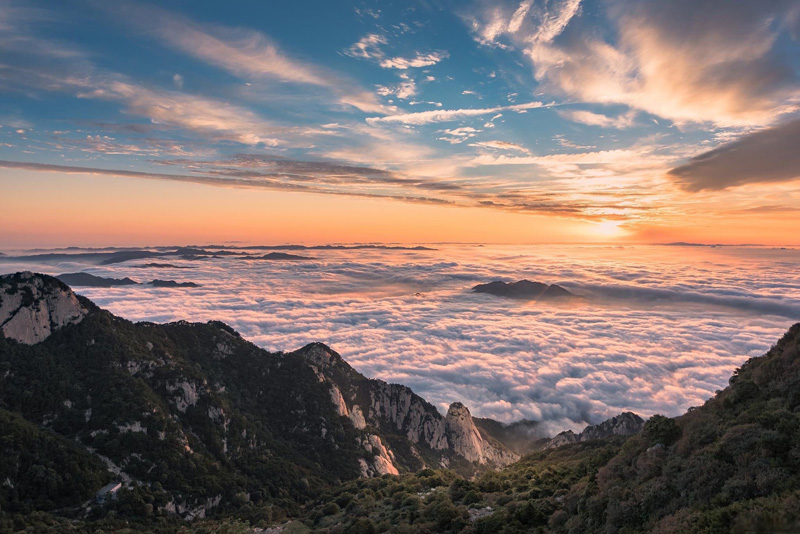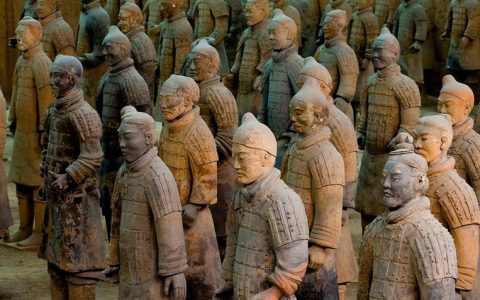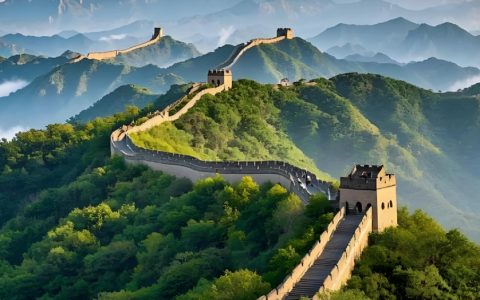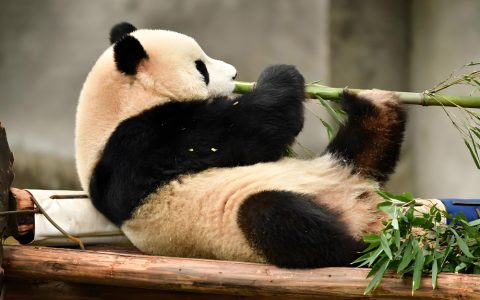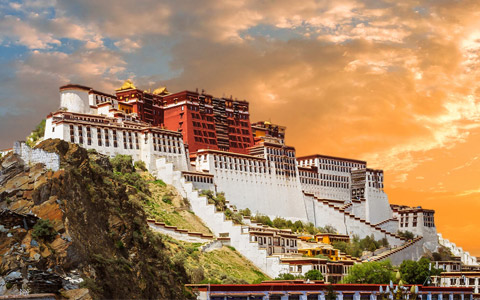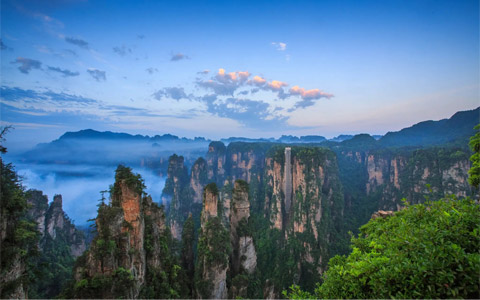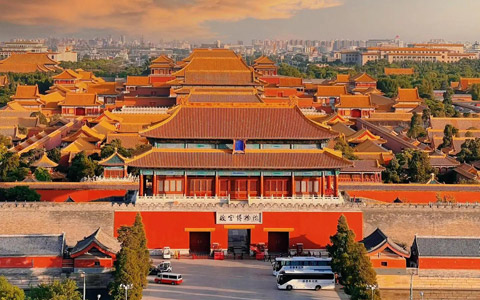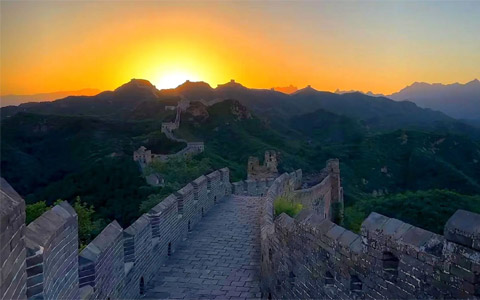1. The Forbidden City
Located in central Beijing, it is the world’s largest and best-preserved ancient wooden complex. It served as the imperial palace during the Ming and Qing dynasties, symbolizing the supreme power of ancient Chinese empire.
As the world’s largest and best-preserved wooden-structured imperial palace complex, the Palace Museum covers 720,000 square meters, with over 9,000 palaces arranged symmetrically along the central axis—its red walls and yellow tiles radiate grandeur under the sun. Serving as the ruling center for 24 emperors of the Ming and Qing dynasties, it houses 1.86 million cultural relics, a “three-dimensional encyclopedia of Chinese civilization.”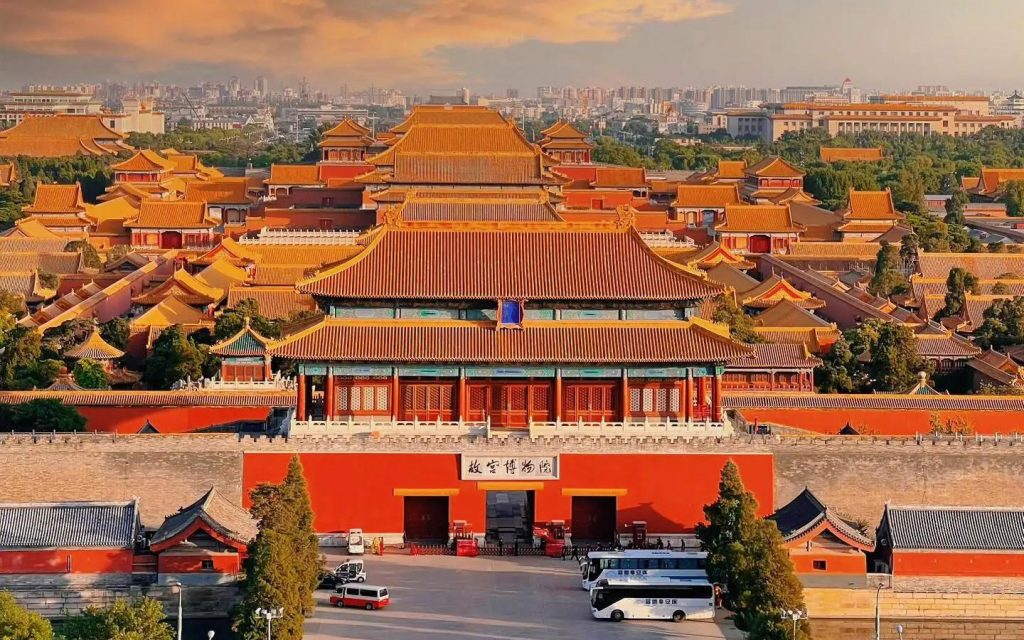
2. The Great Wall
An ancient military defense project of China, it is one of the greatest architectural feats in human history. It snakes along the mountain ridges with imposing grandeur.
Stretching across 15 provinces in northern China with a total length of over 21,000 kilometers, the Great Wall is a “10,000-li dragon” in human architectural history. First built in the Spring and Autumn Period and expanded to its peak in the Ming Dynasty, the Badaling section stands 6-9 meters high and 5-8 meters wide, with beacon towers extending along mountain ridges to the horizon. Once a defensive system that guarded the Central Plains for millennia, it remains a breathtaking landmark to overlook mountains and feel the “spine of China.”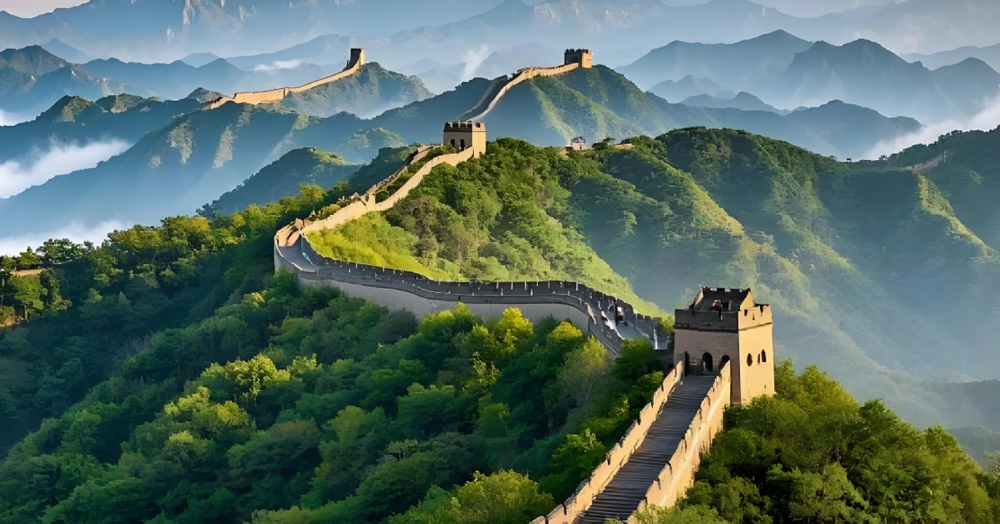
3. Terracotta Army
Located in Xi’an, it is the burial pit of China’s First Emperor, Qin Shi Huang. It consists of thousands of life-sized, uniquely sculpted terracotta soldiers and horses, hailed as the “Eighth Wonder of the World”.
the Terracotta Army is the underground military formation of Qin Shi Huang’s mausoleum. When unearthed in 1974, over 8,000 terracotta warriors and horses stood in neat formations—each warrior with a unique expression, clear armor patterns, and bronze swords still sharp after 2,000 years. This unprecedentedly scaled burial pit restores the military might of the Qin Dynasty at a 1:1 ratio, a “frozen military epic of the Qin era.”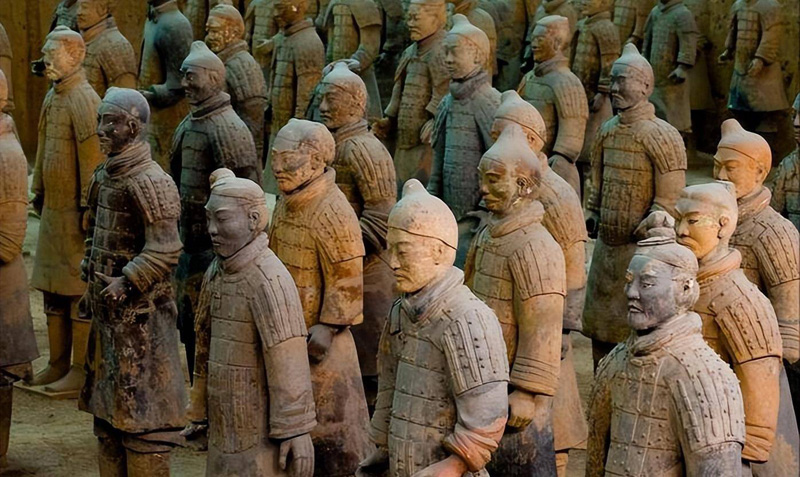
4. Potala Palace
Perched on Marpo Ri hill in Lhasa, it is the highest and most magnificent palace in the world. A sacred site of Tibetan Buddhism, it combines features of a palace, fortress, and temple, covering 360,000 square meters. The Red Palace and White Palace are built along the mountain, with a 13-story structure reaching into the clouds. Its three golden roofs are made of 3 tons of gold, and 2,500 square meters of murals record a millennium of Tibetan history. More than the spiritual residence of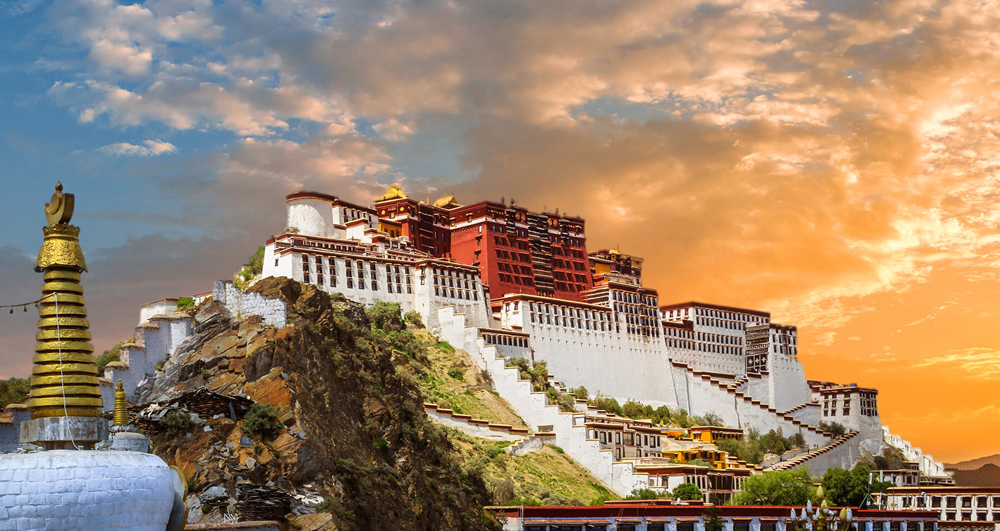
5. Zhangjiajie National Forest Park
Located in Hunan Province, it is famous for thousands of towering quartz-sandstone pillars. It inspired the “Hallelujah Mountains” in the movie Avatar.
It is a World Natural Heritage site, famous for its quartz sandstone peak forest landform. More than 3,000 towering peaks rise abruptly from the ground, among which is the Qiankun Pillar—the prototype of the “Hallelujah Mountains”. Scenic areas such as Yuanjiajie and Tianzishan are shrouded in clouds and mist, and are praised as the “original model of Chinese landscape paintings”.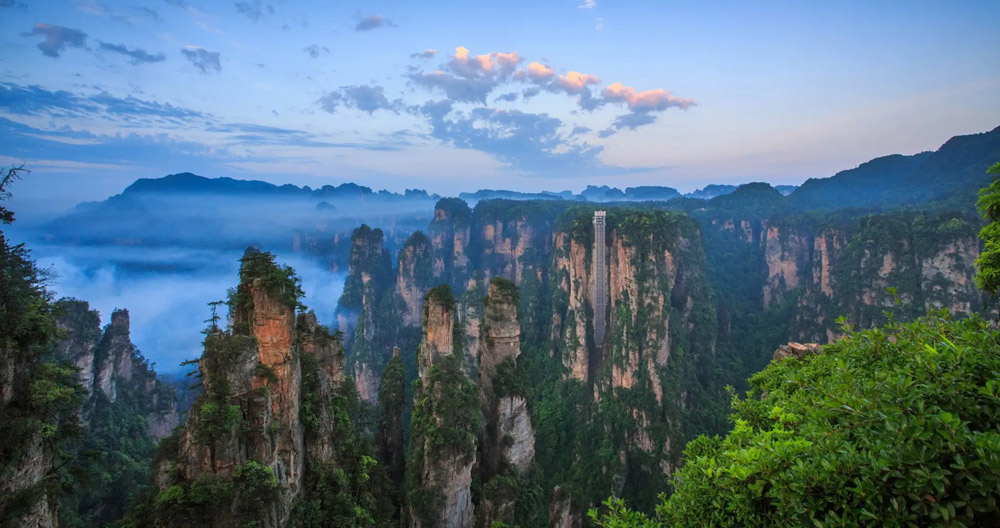
6. Chengdu Research Base of Giant Panda Breeding
Located in Chengdu, it is the best place to see and learn about China’s national treasure, the giant panda. Visitors can see the adorable pandas eating and playing up close.
It is the world’s largest giant panda captive breeding base, covering an area of 3,570 mu (approximately 238 hectares). It simulates the wild ecological environment and currently houses 215 giant pandas. Visitors can observe giant panda cubs, sub-adults and scientific research processes at close range. The new area has added facilities such as the Xiongmao Tower (Panda Tower) and an art gallery.
7. Guilin Landscape
The karst landscape in Guilin, Guangxi, is world-renowned. The clear Lijiang River meanders between emerald green peaks, creating a real-life Chinese ink painting.
The Lijiang River in Guilin is the core landscape of Guilin’s mountains and waters. It belongs to the Xijiang River system in the Pearl River Basin, with a total length of about 83 kilometers. The river water is as clear as a mirror, and the karst peaks on both banks stretch continuously. The blue-gray peaks are reflected in the water, forming a magnificent scene described by the ancient poem “The river is like a green silk sash, and the mountains are like jade hairpins” — hence its reputation as “a hundred li of Lijiang River, a hundred li of painting gallery”.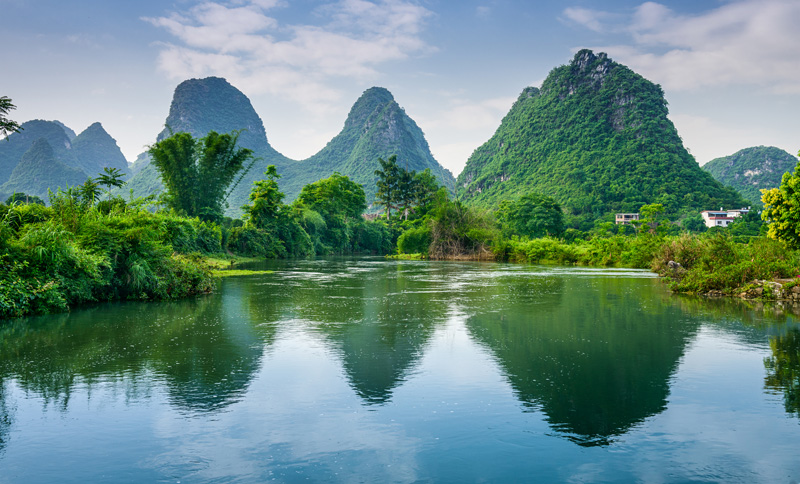
8. Jiuzhaigou Valley
Jiuzhaigou is located in Sichuan Province. It is famous for its colorful lakes, layered waterfalls, snow-capped mountains and forests, and is known as the “fairy-tale world”. As a World Natural Heritage site, it fully reopened in 2025 after post-earthquake restoration, with 90% of its tourist areas restored. Scenic spots such as Wucai Pool (Five-Color Pool), Nuorilang Waterfall and Changhai (Long Lake) are renowned for their blue-green lake water and tufa landscapes. In autumn, the colorful forests and snow-capped peaks complement each other beautifully.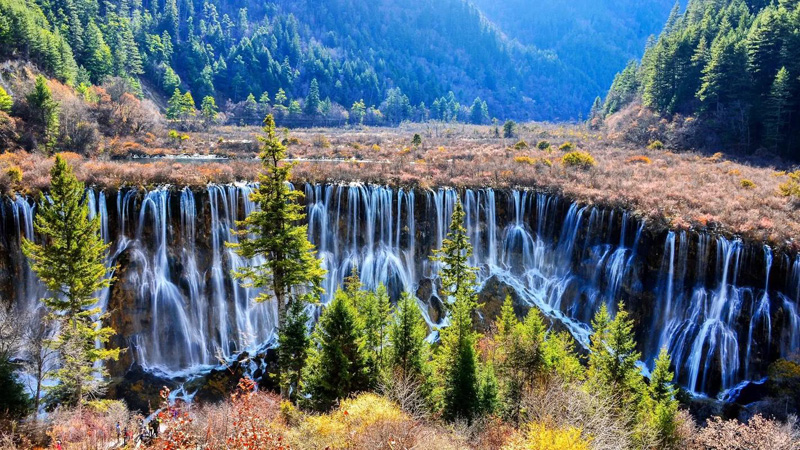
9. Lijiang Old Town
Located in Yunnan Province, it is an ancient town on a plateau with a complex system of canals, cobblestone streets, and rich Naxi ethnic culture. is a millennium-old town inhabited by the Naxi people. It was inscribed on the UNESCO World Heritage List in 1997. Characterized by “no city walls and construction along water”, the town has winding bluestone roads. Around Sifang Street (the core square of the ancient town), there are numerous shops, and traditional Naxi wooden houses are well-preserved—their curved eaves and tilted corners exude a simple and ancient charm.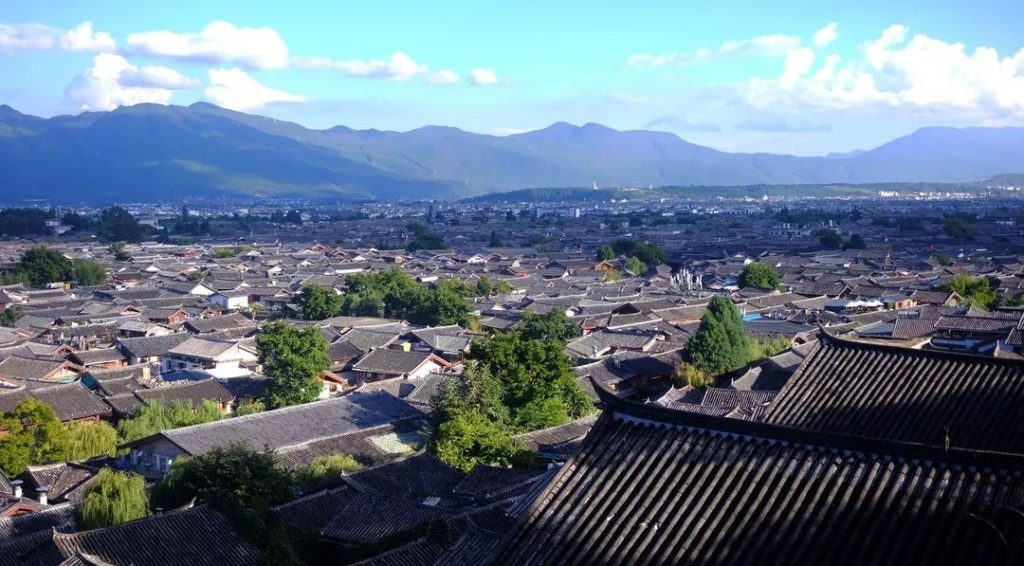
10. West Lake
A central lake in Hangzhou, famous for its scenic views and numerous cultural heritage sites. It is considered a model of Chinese classical garden art and a symbol of Eastern aesthetics.
It is one of China’s Top Ten Scenic Spots and is famous for “The Ten Scenes of West Lake”, such as Broken Bridge in Snow and Three Pools Mirroring the Moon. Su Causeway and Bai Causeway run across the lake surface, while Leifeng Pagoda and Baochu Pagoda echo each other from a distance. Literary figures like Bai Juyi and Su Shi once left poems here.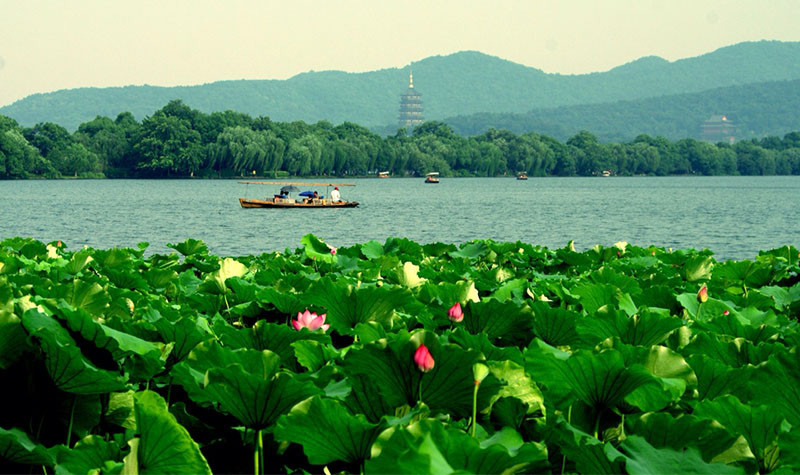
11. Mount Tai
Located in Shandong Province, it is the foremost of the “Five Sacred Mountains”. Since ancient times, it has been a sacred site for imperial ceremonies and public worship. Watching the sunrise from its summit is an unforgettable experience.